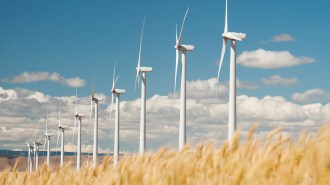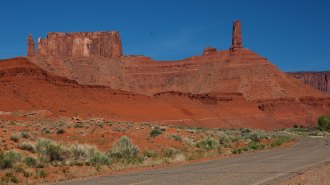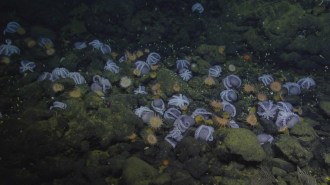Search Results
Lake scavenger hunt
Lakes can vary in color based on levels of sediment, organic matter and algae. Sometimes though, a lake will stand out – not matching the other lakes in an area. Look for these anomalies by participating in a virtual lake scavenger hunt, and help figure out why these lakes don’t fit in! In this activity, students will learn how climate change influences lake color and will investigate lakes with irregular colors that have been impacted by natural or human-made forces.

The Road to Net-Zero
Human activities pump a lot of greenhouse gases into the atmosphere, and those emissions are driving climate change. In this guide, students will review greenhouse gases and their sources and learn about ways to reduce emissions.
How to make the future climate-friendly
Students will answer questions about the online Science News article “It’s possible to reach net-zero carbon emissions. Here’s how,” which explores various solutions to decrease greenhouse gas emissions. A version of the article, “The road to net-zero,” appears in the January 28, 2023 issue of Science News.
Diagram the way to net-zero greenhouse gas emissions
Students will review, discuss and diagram atmospheric greenhouse gases and their impact on Earth. Then students will analyze a graph to begin thinking about what it will take to achieve net-zero emissions. Learning Outcomes: Reviewing greenhouses gases and their impact on Earth, diagramming human impact, understanding the idea of net-zero emissions.

How Much Heat Can We Handle?
Summers are getting hotter. Use this guide to help students explore the science of heat and its effects on the body, and then apply what they learn through diagramming.
Too hot to handle
Heat waves are becoming more frequent around the globe, and scientists are studying humans’ ability to endure the extra heat. Get students thinking about what it means to handle heat and explore basic thermodynamic concepts through diagramming. Learning Outcomes: Diagramming
Feeling the heat
Students will answer questions about the Science News article “Humans may not be able to handle as much heat as scientists thought,” which explores the effects of extreme heat on the body and what that means for us as heat waves intensify around the globe. A version of the article, “How much heat can we handle?” appears in the August 27, 2022 issue of Science News.

Climbers Help Scientists Vibe With Utah’s Rocks
In this guide, students will learn about a citizen science project that is helping scientists better understand the physical properties of rock formations. Students will then explore other citizen science projects that they could participate in based on their hobbies and interests.
Joining forces for rock science
Students will answer questions about the online Science News article “How climbers help scientists vibe with Utah’s famous red rock formations,” which describes how researchers teamed up with rock climbers to collect data that can help assess the seismic stability of red rock formations in Utah. A version of the article, “Climbers help scientists vibe with Utah’s rocks,” appears in the April 23, 2022 issue of Science News.

Deep-sea ‘Octomoms’ Seek the Heat
In this guide, students will answer questions about how scientists discovered that octopuses laying eggs in warm waters near geothermal springs are speeding up hatching. Students will then define rates and their units of measurement for biological and chemical processes and discuss factors that affect rates.
Rates and what affects them
Students will define rates and their units of measurement for biological and chemical processes before discussing factors that affect rates.
Octopus moms seek the heat
Students will answer questions about the Science News article “Some deep-sea octopuses aren’t the long-haul moms scientists thought they were,” which describes how octopuses laying eggs in warm waters near geothermal springs speed up hatching. A version of the article, “Deep-sea ‘octomoms’ seek the heat,” appears in the April 9, 2022 issue of Science News.